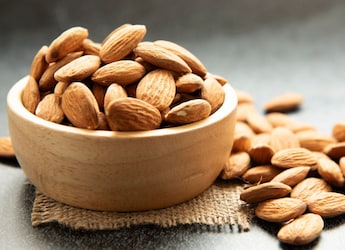If you grew up in an Indian household, chances are you've crunched your way through countless packets of sev and bhujia. Sometimes you might have munched on them straight out of the pack or sprinkled them on top of poha or chaat for added crunch. At first glance, they may look quite similar, both are thin, yellow, crunchy strings. In fact, many people use the words interchangeably. But did you know they're actually not the same? If you delve deeper, you'll discover that bhujia and sev are quite different. From texture and taste to regional roots and ingredients, let's uncover the key differences that set the two apart.
What Is Bhujia?
Bhujia is a spicy and crunchy snack that's full of flavour. It's made with special spices that give it a strong and bold taste. People who like strong flavours love eating bhujia. The most famous version, Bikaneri bhujia, comes from Rajasthan and is so special that it has a Geographical Indication (GI) tag.
What Is Sev?
Unlike bhujia, sev is lighter and crispier. It's great for adding crunch to food. Sev has a mild flavour and is easy to munch on. It comes in many varieties like barik, moti, Ratlami, and laung sev, to name a few. It's widely used as a topping for chaats, poha, bhel or eaten on its own with tea.
Photo Credit: iStock
Here Are 5 Key Differences Between Sev And Bhujia:
1. Ingredients
Sev is typically made from gram flour, while bhujia uses a combination of gram flour and moth dal flour, giving it a unique taste and texture.
2. Spice Profile
Sev has a milder flavour with basic spices, whereas bhujia packs a punch with its bold spices, including ajwain, pepper, and sometimes even cloves or cinnamon.
3. Origin Story
Sev originates from Madhya Pradesh and Gujarat, with Ratlam being a notable hub. Bhujia, on the other hand, is a staple from Rajasthan, particularly from the city of Bikaner.
4. Texture And Shape
Sev is often thicker and softer, while bhujia is finer, crispier, and more brittle due to the addition of moth dal flour.
5. Usage
Sev is commonly used as a topping for chaats, sandwiches and poha, whereas bhujia is often enjoyed on its own with tea or added to snack mixes for an extra kick.
Can You Use Bhujia And Sev Interchangeably In Recipes?
While you can experiment with using bhujia and sev interchangeably in recipes, it's not always recommended. Bhujia's bold flavour and crunchy texture might overpower some dishes, whereas sev's milder flavour and softer texture make it a better fit for certain recipes.
Are Bhujia And Sev Healthy Snack Options?
Both bhujia and sev can be part of a balanced diet when consumed in moderation. They're made from gram flour and other ingredients that provide some protein and fibre. However, they are often high in calories, fat and sodium due to the frying process. To make them a healthier option, consider baking or roasting them instead of frying.
Now that you know the differences between sev and bhujia, go ahead and crunch your way through your favourite snacks.
